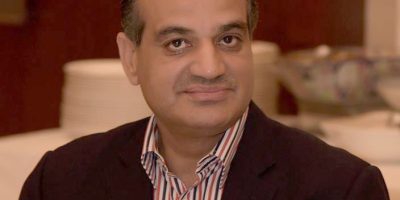Modern aspects of Eastern Medicine

Eastern Medicine basically refers to the system of medicine being practiced for centuries in the states of east. However, in this era of advancement and technology, where a bull cart has been replaced by a motor car and the network of worldwide web has surrounded the globe, it sounds ridiculous to remain stuck with ancient principles and terminologies.SinceEastern medicine is constantly invading its roots in the field of research, it is no longer restricted to traditional or conventional medicine. It would be quite unjustified to divulge it in the terms of Ayurveda, Unani or Hikmat.
In Pakistan, an advanced level of education in Eastern medicine is being provided. There are almost eleven universities offering the degree of BEMS i.e. Bachelors of Eastern Medicine and surgery. On top of these universities lies Government College University, Faisalabad which is facilitating the students with post-graduate degrees of MPhil and PhD after graduation. It has produced a lot of researchers and scientists of Phytomedicine. The significant features of this program and problems being faced by it will be discussed in my next article. Here,I am going to enlighten the modern and traditional aspects of Eastern Medicine and relate it with Chinese Medicine.
The knowledge contained by basic principles of Eastern medicine has the ability to impact the direction of future modern medical development; still, it is easy to find simple knowledge with mark of times and special cultures.There aremultiple branches of Eastern medicine revealing its diversity; collectively these can be covered by dividing the whole structure into two major parts:
- One partis connected with the puretraditional way of practice
- The second one is consistently moving towards modern approaches
The part that is persistently moving towards modern approaches possesses all the principles and theories of traditional medicine to be used for diagnostic and therapeutic purposes. For diagnosis, it involves the philosophy based principles i.e. the principle of fourtemperaments. Alongwith this,it supports the use of advanced technology such as X-Ray, ultrasound, endoscopy etc.There are ideas to reform the ancient techniques to modern and more scientific procedures as well. It uses the modernized expertise of research and the traditional knowledge of herbs together to present research based natural medicines with efficacygreater than purely traditional medicines.
Contrary to this, the part of Eastern medicine connected with pure traditional way of practice is beyond all above modern diagnostic and therapeutic approaches. It is standing on the base of ancient principles with no scientific research and limited to temperamental diagnosis and use of crude formulations for treatment.
Predominantly, Eastern Medicine is similar to traditional Chinese Medicine with some minor differences of philosophy.Yet both have enough flexibility to be merged in each other.Beforeproposing an eventual association between these two systems, it is necessary to have basic idea about what Chinese Medicine actually is.
Traditional Chinese medicinehas beenthe most advanced and experienced way of therapy in the world for centuries.
In the 16th century, what is now known as “western medicine” was introduced to China but was not commonly used and thus had little effect. It was not until the Opium War that “western medicine” began to develop in China. Therefore, prior to that event, traditional Chinese medicine was always the leading force of medical care in China.The key to successful medicine lies in its efficacy. A popular Chinese saying states “Excellence is from experience.”
As modern (westernized) medicine’s impact increased, it led to the development of “integrative medicine”
Theories, therapeutic principles, technologies, and understanding of the life sciences were elaborated, and the basic structure of traditional Chinese medicine also became clearer. Most importantly, traditional Chinese medicine began to reach a common point with modern medicine.
In the field of surgery, Chinese medicine is not only self-sufficient in anesthesia but acupuncture also is being practiced as a replacement of itin some surgeries.
Unfortunately, Eastern medicine,despite of its healthsupportiveintegrity, is not being encouraged in Pakistan due to lack of awareness andan unfavourable political environment. Whereas, Chinese medicine is believed to be reliable in China andspreading rapidly all over the world. China, due to its stronger economical background has a great potential to propagate in the world market including the health sector.
Hence, the union of Eastern Medicine with Chinese medicine is inevitable to survive and progressin the competition with the west.
By:
MasoomaAbid
Department of Eastern Medicine and Surgery
Government College University, Faisalabad
Related News

Innovative diplomacy with the US, KSA and Iran
By: Qamar Bashir The convergence of diplomatic engagements between Pakistan, USA, Kingdom of Saudi ArabiaRead More

Is there any hope at the end of the tunnel?
When contemplating the future of Chinese and other countries’ investments and involvement in Pakistan, aRead More


Comments are Closed